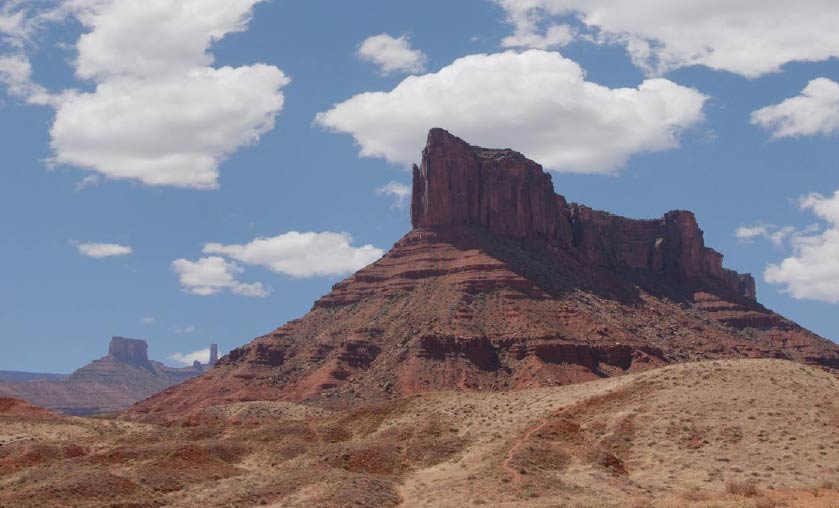
|
Equipment reports here are evolving documents. Return visits may reveal more information. Latest update: 10/12/08 |
Improving on Nature When Is A Photograph Not A Photograph? Shooting for Effect Photography used to be all about recording images of stuff that was right there in front of the lens. Then people started thinking. After about the first mistake—a double exposure, most likely—Louis Jaques Mandé Daguerre tapped his temple and said, "This means something!" except it came out sounding like "sessy sigg niffy kelka shows" at the time. Double exposures were a Big Deal for a long while, until the idea of matting came along. Mattes are silhouettes of subjects that separate an object from its photographed background. It can be black and white or any degree of gray. Where black, that area of the image appears opaque and solid. Where white, another image can be added. Where gray, some degree of double exposure will exist between the two images. Mattes on top of mattes on top of mattes cause the apparent build-up of many solid subjects over a background. Here's an image as shot:
Obviously its a home where the skies are not cloudy all day. Just the jet trails, besmirching an otherwise attractive mesa. No use shooting that, says the purist. And perhaps given a big enough budget and no desire to continue looking for the next photograph and the next, that guy might be right. But I shot it anyhow, because I had read my own eBooks and knew what possibilities I had whispered in my own ear. Making a matte of the hard line between earth and sky was a snap. Photoshop gives you lots of tools to do this. You can select the sky by brightness, color or by painting it out by hand. Eventually a hard black and white matte separated the two areas. Because the universe is a perfect place, eventually I spied a nice puffy-clouded sky stretching off to the distant horizon and shot pictures of it for use later. Adding one of these to the mesa produced a nicer environment for the buffalo to roam in:
Even though it kills that cloudy sky part of Home On The Range, it feels more comfortable to this photographer. A stock photography house is much more likely to buy it in this form. But can it have an expanded life? Of course. An early movie photographic technique is called "Day For Night" (sometimes shorthanded as D4N in cinematographers' notes) that has the image underexposed three or four stops to give a presumably moonlight appearance to the shot. Fuggeddaboudit. It doesn't work very well at all, except in movies about movie making that use the term as the title of the movie. But you can turn a daylight shot into an exceptionally convincing night shot by applying a custom curve to the daylight image, then matting in some stars to solidify the effect. A few nights after this shot, I was staring into the cosmos with a Nikon D200 and an f/1.4 50mm lens. Thirty seconds later I had another image with possibilities. Matte + custom Curves applied + cosmos + retouching the foreground horizon to silhouette it against the night sky glow = convincing fake night shot. As per here:
Notes: Every shot is different. Showing you my matte and Photoshop Curve won't really help much. You will learn more about achieving something like this by doing it wrong, then not quite right, then pretty good, then exceptionally well in a series of attempts than I can impart to you by handing you a fish. —Peter iNova Peter iNova is a photographer who remembers film, enlargers, slides, darkroom stains and all the things you don't have to. His checkered career has included big studio photography (8 x 10 transparencies) in Chicago, video production in Florida, and exotic multi-projector synchronized video presentations for Universal Studios, National Geographic and theme parks around the world. At one time racked up over a million dollars worth of film stock and lab fees, commenting, "Geez. We have to find a way of doing this with computers." He is the prime inventor of a number of patents in extreme video display technologies. When digital cameras passed the million pixel threshold, he turned once again to still photography and created the first interactive digital photography eBook in 2000. His experiences with video are a match with the emerging talents of what he calls HDSLRs.
|
|
 Nicer but Faker Department
Nicer but Faker Department
